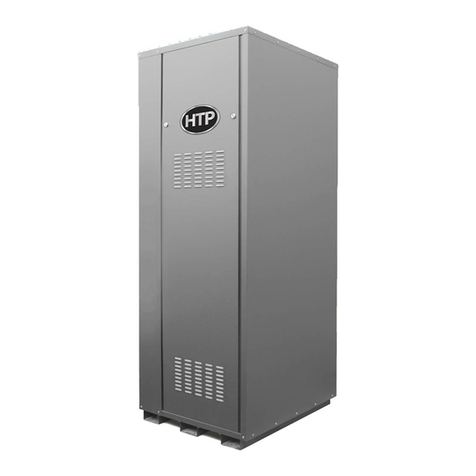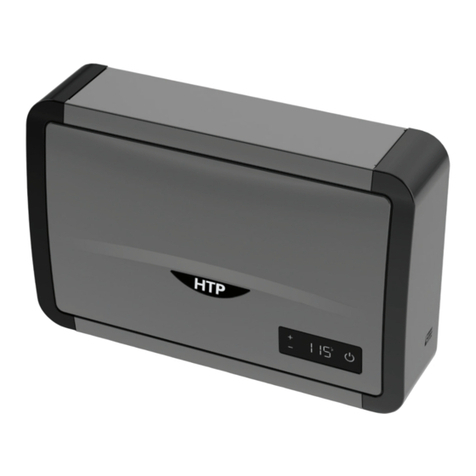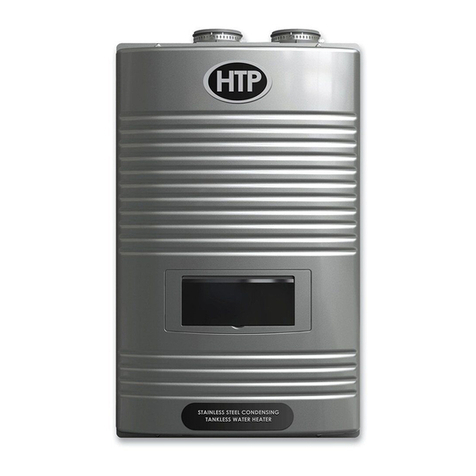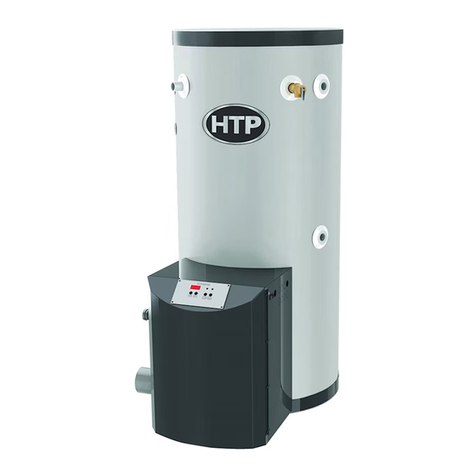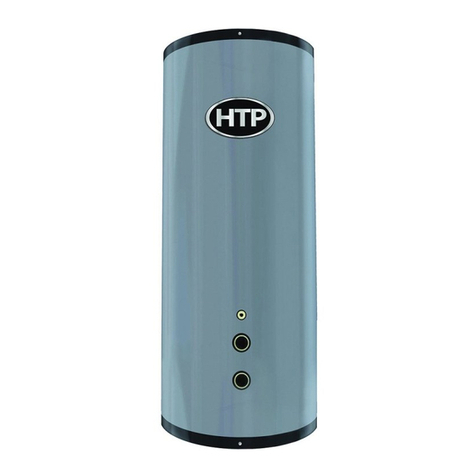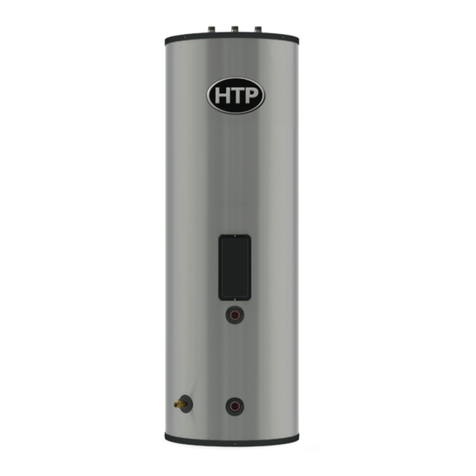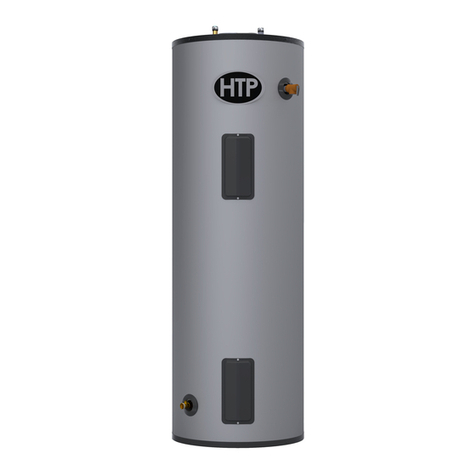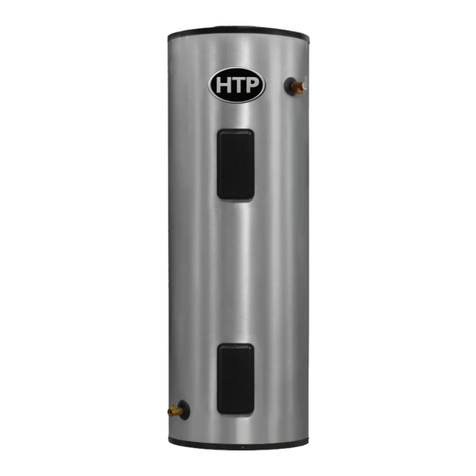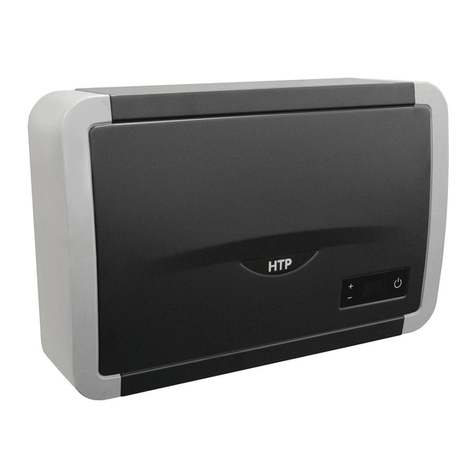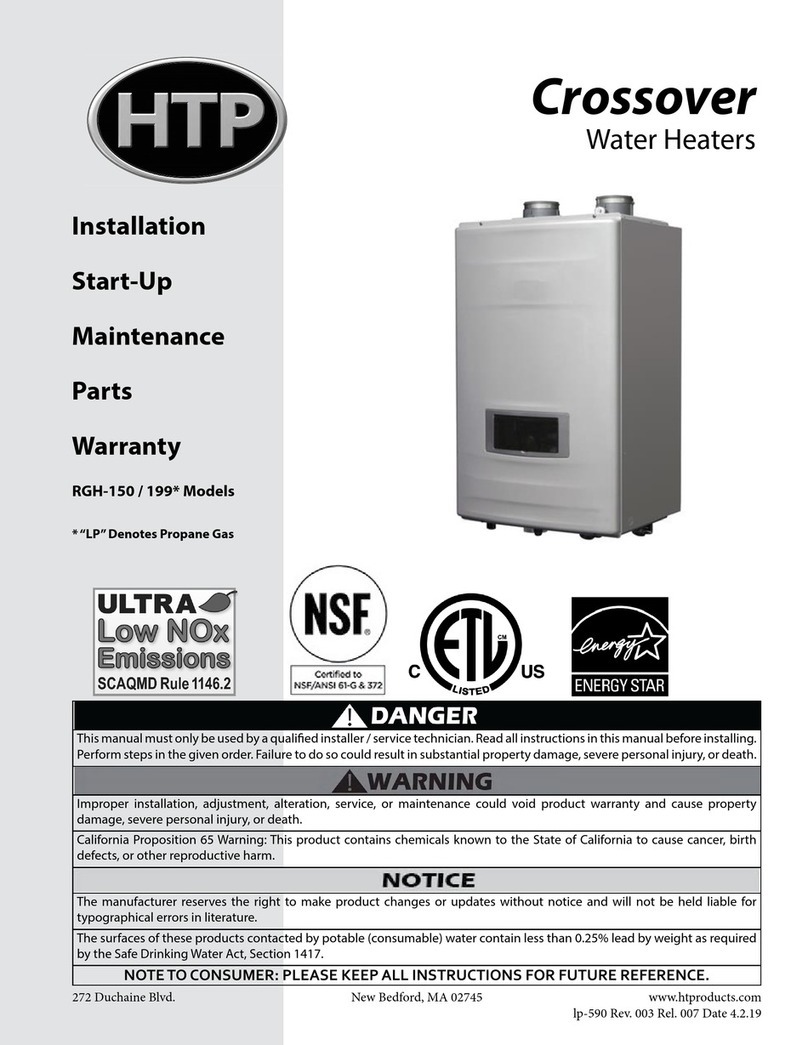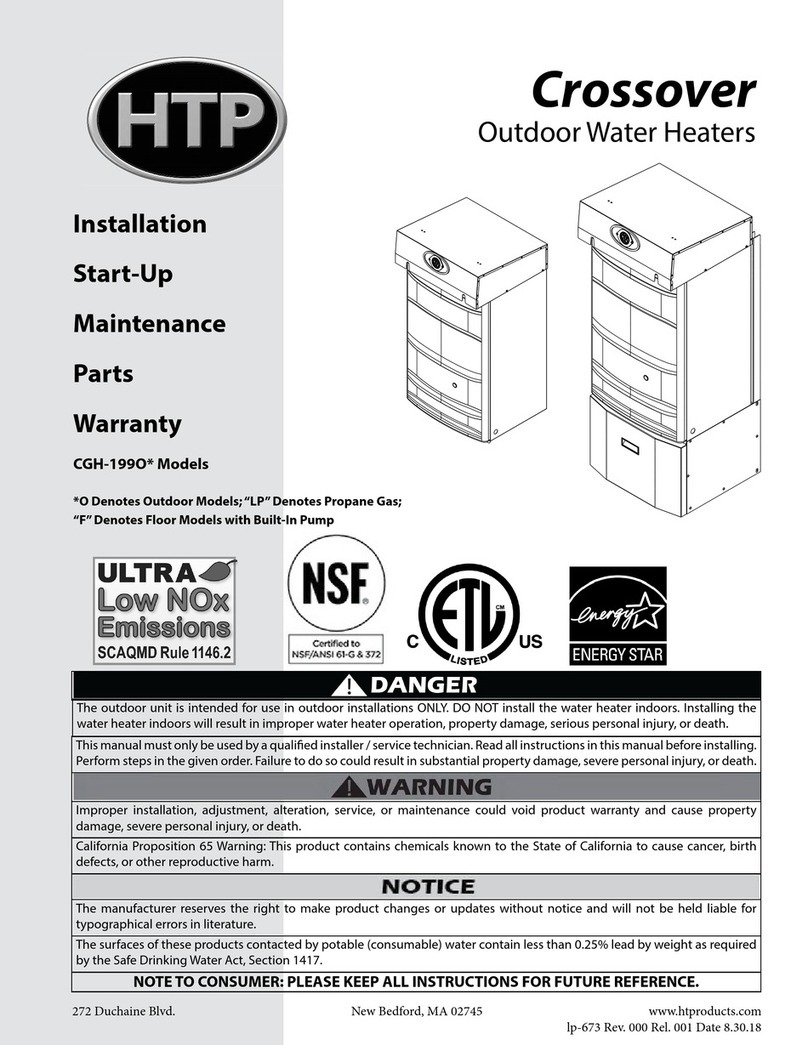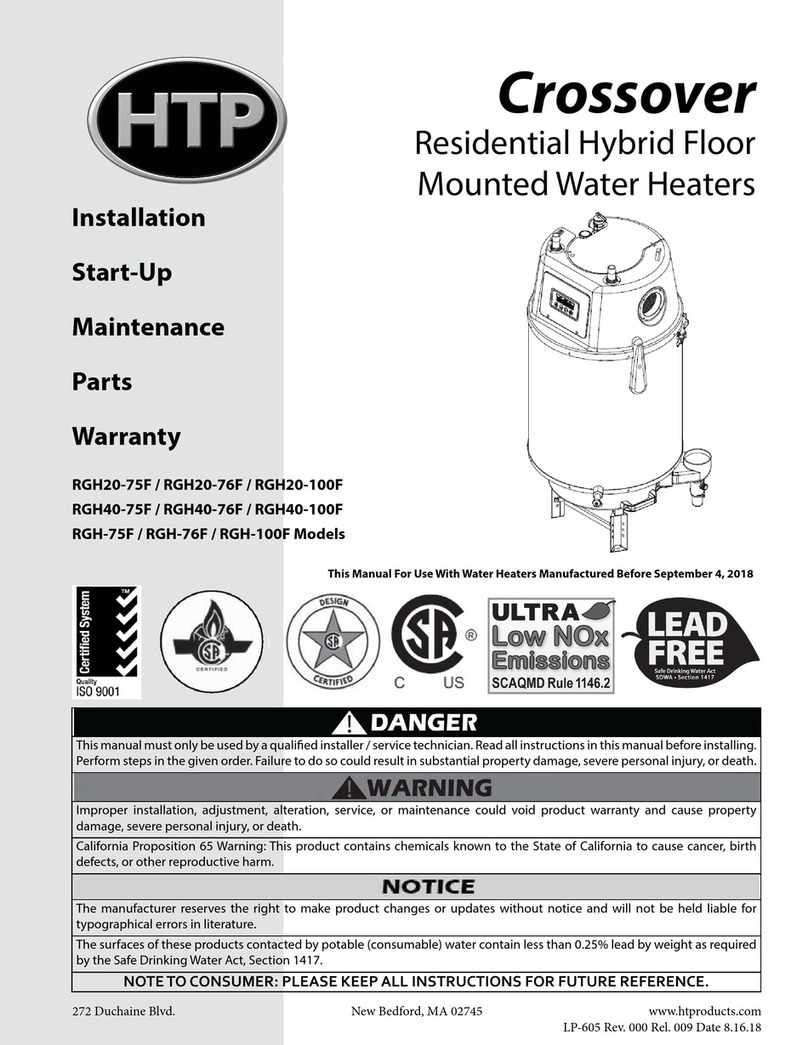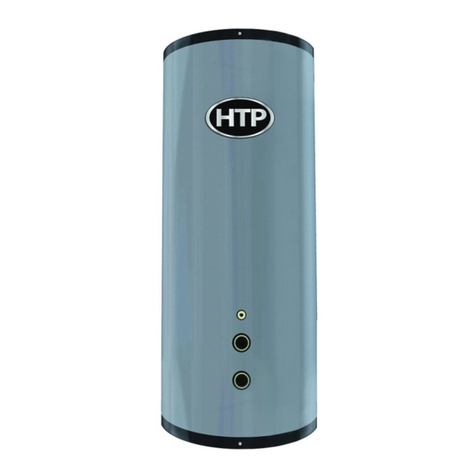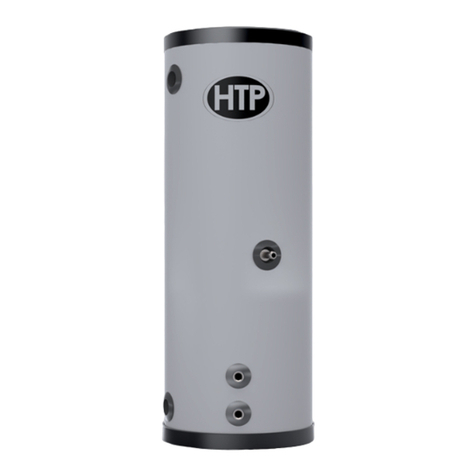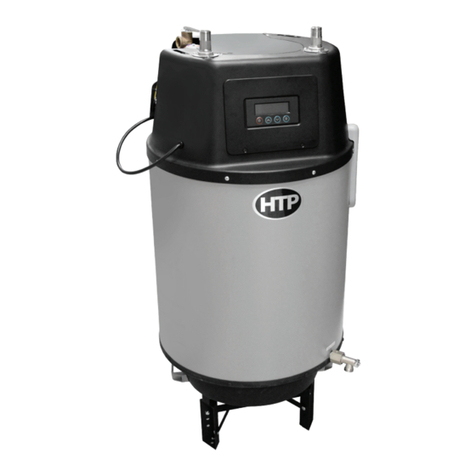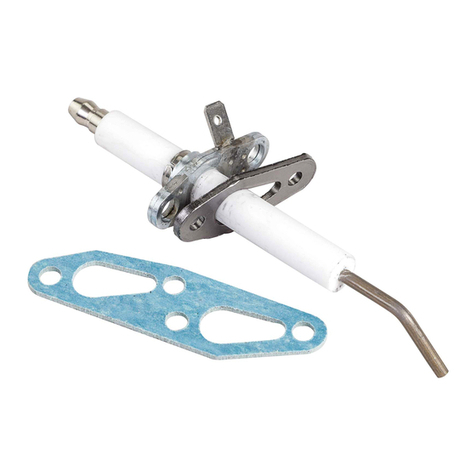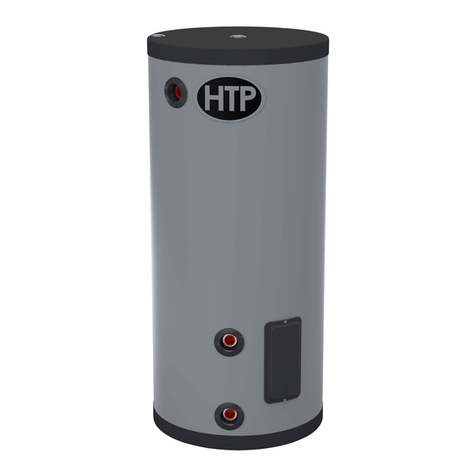
lp-784 Rev. 000 Rel. 000 Date 5.28.21
6
B. Water Chemistry Requirements
Chemical imbalance of the water supply may aect eciency and
cause severe damage to the appliance and associated equipment.
Water quality must be professionally analyzed to determine whether
it is necessary to treat the water. Various solutions are available to
adjust water quality. Adverse water quality will aect the reliability
of the system. In addition, operating temperatures above 135oF will
accelerate the build-up of lime scale and possibly shorten appliance
service life. Failure of an appliance due to lime scale build-up, low pH,
or other chemical imbalance IS NOT covered by the warranty.
The water must be potable, free of corrosive chemicals, sand, dirt,
and other contaminates. It is up to the installer to ensure the water
does not contain corrosive chemicals or elements that can damage
the heat exchanger. Potable water is dened as drinkable water
supplied from utility or well water in compliance with EPA secondary
maximum contaminant levels (40 CFR Part 143.3). If the water contains
contaminants higher than outlined by the EPA, water treatment is
recommended and additional, more frequent maintenance may be
required.
If you suspect that your water is contaminated in any way,
discontinue use of the appliance and contact an authorized
technician or licensed professional.
• Water pH between 6.5 and 8.5
• pH levels below 6.5 can cause an increase in the rate of
corrosion. pH of 8.5 or higher can potentially cause lime
scale build-up
• Maintain water pH between 6.5 and 8.5. Check with litmus
paper or have it chemically analyzed by a local water
treatment company.
• If the pH is not between 6.5 and 8.5, consult a local water
treatment company for solutions.
• Hardness less than 12 grains (200 mg/L) (Residential Use
- water temperatures below 140oF)
• Hardness less than 7 grains (120 mg/L) (Commercial Use
- water temperatures of 140oF and greater)
• Hardness levels above the required amounts can lead to
lime scale build-up throughout the system. Water below 5
grains/gallon (85 mg/L) may be over softened.
• Consult local water treatment companies for unusually
hard water areas (above the required amounts) or for
other treatment solutions if water is being over softened
(below 5 grains/gallon [85 mg/L]).
• Chloride concentration less than 100 ppm (mg/L)
• Do not ll appliance or operate with water containing
chlorides in excess of 100 ppm (mg/L).
• Using chlorinated fresh water should be acceptable as
levels are typically less than 5 ppm (mg/L).
• Do not connect the appliance to directly heat swimming
pool or spa water.
• Total Dissolved Solids (TDS) less than 500 ppm (mg/L)
• Total dissolved solids are minerals, salts, metals, and
charged particles that are dissolved in water.
• The greater the amounts of TDS present, the higher the
corrosion potential due to increased conductivity in the
water.
• If using softened water to ll the appliance, it is still
possible to have high TDS. This water can be corrosive.
Consult local water treatment companies for other
treatment solutions to reduce this aect.
*NOTE: To promote appliance service life, it is strongly
recommended to follow the maintenance procedures in this
manual.
C. Solar Heat Exchanger Piping
Set up the primary balance of the system components following the
piping detail in Figure 5.
Run ½” type M or larger copper pipes, or ex line sets, to and from
the collector following the direction of supports, penetrations, and
other relative items.
Only copper, cast iron, or brass are to be allowed in the collector
piping loop due to transient operating temperatures that may reach
as high as 300oF. PEX, PVC, CPVC, and other polymers are expressly
prohibited in the piping network of closed loop systems.
When making a connection to the heat exchanger, use Teon
Tape and joint compound to prevent leaks. The connections to the
heat exchanger are 1” NPT. Do not apply heat directly to the heat
exchanger thread connection when sweating ttings.
Line pressure and temperature gauge shall be installed in the
collector supply and return lines to allow for a simple diagnostic
check of proper system operation. On a sunny day, the hot water
Part 3 - Piping
The design and installation of the solar water heating system should
be done by qualied individuals. It is important that good design
and installation practices be followed to assure that your system will
operate properly. Failure to follow installation guidelines for your solar
water heating system could cause component failure and possible
safety issues.
A. Potable Water Piping
It is very important that you do the potable piping before you pipe
into your solar system. Failure to do so may damage your water
heater.
Do not introduce HTF into any ttings on the heater except those
clearly marked for that purpose.
It is mandatory that all plumbing be done in accordance with local
and state codes or warranty will be void. It is also necessary to use
both thread tape and pipe dope on all mechanical connections. The
potable water piping is located on the side of your solar water heater
and marked Hot and Cold. It is recommended that unions or exible
copper connectors be used so heater can be easily serviced. Install a
shut-o valve on the cold feed near the solar water heater to isolate
the tank for future service.
Provide clear access to the water heater, pump, expansion tank, mixing
valve, time clock and other key components. The components on the
potable side of the system may require future service or maintenance,
so it is recommended that the connections be made with brass unions.
You must use copper and brass ttings in plumbing the solar storage
tank and expansion tank. The use of galvanized ttings, nipples,
dielectric unions, CPVC, PVC, or other plastic pipe is prohibited.
Hard copper connections to the city cold water supply line and home
hot water feed lines are recommended.
The gaskets in standard water heater ex hose connectors can become
brittle and compressed over time and begin leaking on the water
heater. If not detected in a timely manner, a drip or leak may cause
serious damage to the tank’s electrical components, or, in extreme
cases, cause the tank to leak from the outside in.
Never use dielectric unions or galvanized steel ttings on any
domestic water connections or auxiliary connections. ONLY use
copper or brass ttings. Teon thread sealant must be used on all
connections.
